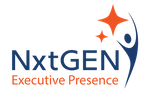Images: Canva
“The glue of life”, “the foundation principle” – TRUST. As described by Stephen R. Covey, it sits at the heart of every successful relationship, yet remains one of the most subtle qualities to cultivate. When deals falter or clients walk away, broken trust is typically the invisible culprit. Despite its importance, leaders struggle to develop systematic approaches to build and maintain this essential foundation.
What if there were a framework that transformed this abstract concept into concrete actions you and your team could implement immediately? The TRUST model does exactly that–breaking down the essential components of authentic business communication into a memorable acronym that ends with TALKing Backwards.

Unlocking TRUST
Strong trust is the prerequisite of any thriving relationship, whether in our work environments or personal connections. Bear in mind, trust isn’t just a feel-good concept—it’s a business essential with measurable impact. For context: Companies with high-trust cultures see reduced stress, increased productivity, and higher employee engagement. With clients, trust directly translates to loyalty, with trusted brands enjoying triple the customer retention and more than double the recurring revenue. Strong trust propels collaboration, fuels innovation and facilitates organisational agility. In contrast, when trust erodes, costs surge as negotiations lengthen and relationships require constant monitoring. Within today’s commercial reality, developing systematic approaches to building trust isn’t optional. It’s the foundation of sustainable competitive advantage.
We’ve previously discussed how trust plays a crucial role in breaking down change resistance, noting its prominence in global initiatives that demonstrate how transparent communication enables leaders to foster innovation-friendly environments. For today’s organisations and their leadership, trust isn’t an abstract goal—it’s an absolute necessity!
Trust isn’t built overnight – but what if there was a framework that could transform you from just another manager into a leader with genuine competitive advantage? Fortunately, our Team has developed exactly that!

T: Transparency
Transparency forms the cornerstone of organisational trust, requiring the courage to communicate honestly even when information is unfavorable. Leaders who practice radical candor—sharing company challenges, admitting mistakes, and explaining decisions openly—create psychological safety that empowers teams to reciprocate with honesty. This transparency isn’t about overwhelming disclosures but rather thoughtful openness that demonstrates respect for your audience’s intelligence. When employees and clients witness consistency between what’s said privately versus publicly, trust deepens.
R: Reliability
Consistent actions that speak louder than words – that reliability. It establishes trust through consistent, predictable behaviour over time. When you deliver on promises—whether meeting deadlines, maintaining quality standards, or following through on commitments—you build credibility that no persuasive rhetoric can match. This reliability extends beyond big initiatives, it should encompass your daily interactions: such as responding to messages and honoring appointments and other stakeholders’ time. The cumulative effect of these consistent actions creates a reputation for dependability that becomes a powerful competitive advantage.
U: Understanding
The power of empathetic listening requires the discipline to truly hear others before formulating responses—a skill surprisingly rare in business environments. Leaders who practice empathetic listening demonstrate genuine curiosity about stakeholders’ perspectives, asking probing questions and reflecting back concerns to confirm comprehension. This approach acknowledges the fundamental human need to be seen and valued. When employees and clients feel deeply understood, defensive barriers dissolve, enabling authentic dialogue and collaborative problem-solving.
S: Specificity
Clarity cuts through ambiguity, replacing vague clichés with concrete, actionable communication. When you provide clear expectations, detailed feedback, and precise information, you eliminate the uncertainty that breeds mistrust. Specific communication demonstrates respect for others’ time while reducing the costly misunderstandings that plague today’s business landscape. This precision extends to commitments. For instance, rather than promising “soon” or “better”, trustworthy communicators define exactly what will be delivered and when. By eliminating the interpretation gaps where doubt dwells, specific communication creates alignment, boosts confidence, and builds credibility.

T: TALKing Backwards
This approach reveals the key stages in building solid relationships between brands or leaders and their audiences: Trust, Advocate, Like, and Know (TALK). This framework suggests that relationships develop in reverse order—beginning with awareness (Know), progressing through appreciation (Like) and active support (Advocate), before finally reaching Trust. Each stage must be completed sequentially, as trust rarely emerges from a single interaction. Using Apple as an example, customers first become familiar with the brand through advertisements or word-of-mouth, then develop positive feelings about its products and leadership, eventually promoting it to others as unofficial ambassadors, and finally reaching unwavering trust—the pinnacle where loyal customers confidently purchase new products without hesitation, maintaining their commitment, as long as that trust remains intact.
Putting the TRUST into action
To walk the talk and implement the TRUST framework, start by evaluating your current communication practices against each element. Foster transparency by creating safe spaces for honest dialogue, even around difficult topics. Build reliability through consistent follow-through on commitments, from major projects to everyday interactions. Develop understanding by training teams in active listening techniques and creating structured opportunities for stakeholder feedback. Enhance specificity by establishing clear communication that emphasises concrete details. Finally, apply the TALKing backwards approach by recognising relationship-building as a sequential process, strategically moving audiences from awareness (Know) to appreciation (Like), advocacy, and ultimately TRUST. Keep in mind, that success requires patience and commitment, as trust accumulates over time through consistent application of these interconnected principles.
Trust and take the initiative
Building trust isn’t just good practice—it’s essential for business success. By embracing our five-step framework, you’ll create the foundation needed to accumulate meaningful trust capital. When leaders consistently apply these principles, organisations experience a measurable competitive advantage that translates directly to improved performance and stakeholder loyalty.
At NxtGEN Executive Presence, we specialise in helping leaders develop the communication skills critical for today’s business landscape. Our expert-led training equips you with practical tools to deliver messages with confidence and impact. If you are ready to transform your presence and to learn more about the TALKing backwards and TRUST frameworks in practice, contact us today.
References:
Typeform. Boost customer loyalty in 6 simple steps. Retrieved from https://www.typeform.com/blog/boost-customer-loyalty-in-6-simple-steps
FranklinCovey. Building organizational agility. Retrieved from https://www.franklincovey.com/blog/building-organizational-agility/
Radical Candor. Our approach. Retrieved from https://www.radicalcandor.com/our-approach/
Ross, M. C. High trust culture. Retrieved from https://www.marie-claireross.com/blog/high-trust-culture
NxtGEN. Driving change in today’s corporate environments. Retrieved from https://nxtgen.ie/driving-change-in-todays-corporate-environments/
NxtGEN. Talking backwards: Building advocacy and trust between brand leaders and their audience. Retrieved from https://nxtgen.ie/talking-backwards-building-advocacy-and-trust-between-brand-leaders-and-their-audience/














